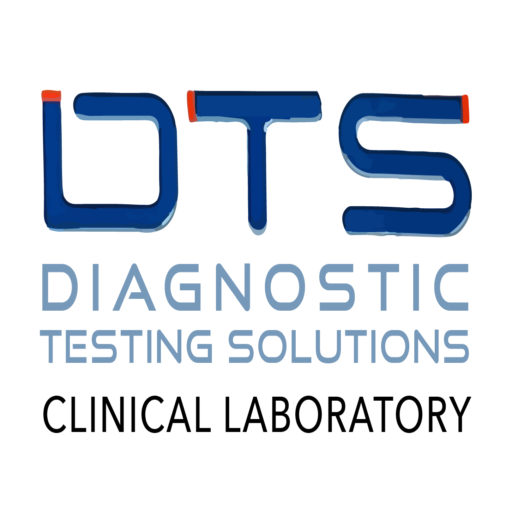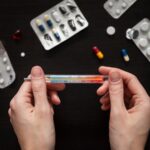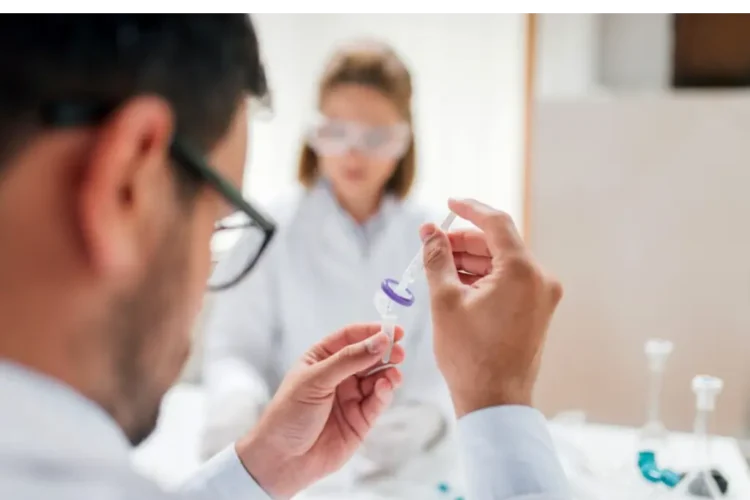
Sexually transmitted diseases (STDs) are more common than many people realize, and getting tested regularly is one of the most responsible steps you can take for both your health and your partner’s well-being. Whether you’re experiencing symptoms, have a new partner, or simply want to ensure your sexual health is on track, understanding how to prepare for an STD test can ease any anxiety and lead to more accurate results.
Why Getting Tested for STDs is Essential
STD testing is not just about treating infections but also about preventing their spread. Many STDs are asymptomatic, meaning you may have no noticeable symptoms while still being able to transmit the infection to a partner. Early detection through regular testing ensures timely treatment, which reduces the risk of complications and protects your health in the long term.
Routine testing is especially important for sexually active individuals because it helps catch infections like chlamydia, gonorrhea, syphilis, and HIV in their early stages, making them easier to treat or manage.
Health Benefits of Regular STD Testing
Regular testing can prevent complications such as infertility, pelvic inflammatory disease, and increased susceptibility to HIV. By catching infections early, you can treat them before they cause serious health problems. Testing also promotes transparency and trust in relationships, allowing partners to make informed decisions about their sexual health.
Additionally, many STDs are curable, and those that aren’t, such as HIV or herpes, can still be managed with proper treatment. Taking control of your sexual health through regular testing empowers you to live a healthier, more informed life.
When Should You Get an STD Test?
STD testing should be part of routine healthcare for sexually active individuals. Here are the main situations when you should consider getting tested:
- Routine Check-ups: Even without symptoms, it’s advisable to get tested annually if you’re sexually active.
- After a New Partner: Before starting a new sexual relationship, it’s important to get tested to ensure both partners know their status.
- Unprotected Sex: If you’ve had sex without using condoms, especially with new or multiple partners, getting tested is essential.
- Symptoms: Experiencing unusual discharge, sores, itching, or painful urination are common signs that you should schedule a test immediately.
- Partner Notification: If your partner informs you they’ve tested positive for an STD, get tested as soon as possible to prevent further transmission.
Understanding the STD Testing Process
Preparing for an STD test might seem daunting, but it’s a straightforward and quick process that can provide you with peace of mind. Understanding what happens during the test can help reduce your anxiety.
Common Types of STD Tests
Different STDs require different tests; the testing method often depends on the infection being screened for. Here’s a quick overview of the most common types of STD tests:
- Blood Test: This is often used to detect infections like HIV, syphilis, or herpes. A small sample of blood is drawn from your arm and analyzed.
- Urine Test: Commonly used for detecting chlamydia and gonorrhea. You’ll provide a urine sample, which will be tested for bacteria or viruses.
- Swab Test: A healthcare provider may take a swab from the affected area (genitals, throat, or rectum) to detect infections like gonorrhea, chlamydia, or trichomoniasis.
- Pap Smear/HPV Test: Women are screened for HPV or cervical cancer through a Pap smear, where cells are collected from the cervix for analysis.
What Happens During an STD Test?
STD testing is usually quick, painless, and confidential. You’ll start by filling out forms about your sexual and medical history, which helps the healthcare provider determine which tests are appropriate for you. Based on the type of infection being screened for, you will either provide a urine sample, have blood drawn, or undergo a physical exam and swab test.
Most tests take only a few minutes, and the results typically return within a few days. Rapid HIV tests may provide results in as little as 30 minutes. The entire process is discreet, and your privacy is protected by laws like HIPAA, ensuring confidentiality.
STD Testing Checklist: How to Prepare Before Your Appointment
Preparing for an STD test is simple, but following these steps can ensure you get the most accurate results and a smooth testing experience:
- Avoid Sexual Activity Before Your Test
Abstain from sexual activity for 24 to 48 hours before your test, especially for infections like chlamydia and gonorrhea. Sexual activity can introduce bacteria that may interfere with test results, leading to inaccurate readings.
- Don’t Urinate Right Before Testing
For urine-based tests (such as for chlamydia and gonorrhea), avoid urinating for at least 1-2 hours before your appointment. A concentrated urine sample helps detect infections more effectively, providing a better chance for accurate results.
- Medications and Fasting Requirements
Some tests, like blood tests for HIV or syphilis, may require fasting for a few hours. Always check with your healthcare provider for instructions to ensure you’re fully prepared. Also, inform them about any medications you’re taking, as some drugs may alter the test results or require special handling.
What Happens After Your STD Test
After completing your test, the next step is understanding the results and taking appropriate action, whether further testing, treatment or informing your partner.
Understanding Your Test Results
Once your test is complete, the time it takes to receive results can vary depending on the type of test:
- HIV Rapid Test: Results are available in 20–30 minutes.
- Chlamydia and Gonorrhea: Results are typically available within 1-3 days.
- Syphilis and Herpes: Blood test results may take 3-5 days.
If your results come back negative, you’re in the clear for now but should continue regular testing if you’re sexually active. If you test positive for an STD, your healthcare provider will guide you through the treatment process and any follow-up tests that may be required.
Post-Test Treatment and Partner Notification
If you test positive for an STD, many infections, such as chlamydia and gonorrhea, are easily treatable with antibiotics. For viral infections like herpes or HIV, antiviral medications can help manage symptoms and reduce the risk of transmission. It’s essential to notify any recent sexual partners so that they can get tested and treated as well.
Common STDs Tested During Screening
When getting tested for STDs, healthcare providers usually focus on the most common sexually transmitted infections. These include bacterial infections like chlamydia, gonorrhea, and syphilis, as well as viral infections such as HIV, HPV, and herpes. Knowing what to expect during screening can help you feel more comfortable and informed about your sexual health. Below are the most common types of STDs that are typically tested for during routine screenings.
Bacterial Infections (Chlamydia, Gonorrhea, Syphilis)
Bacterial infections such as chlamydia, gonorrhea, and syphilis are among the most frequently diagnosed STDs. These infections can be easily treated with antibiotics if detected early. Left untreated, they can lead to severe complications like infertility, chronic pain, and even organ damage. Testing for bacterial infections usually involves providing a urine sample or undergoing a swab test to detect the presence of bacteria.
Viral Infections (HIV, HPV, Herpes)
Viral infections like HIV, HPV, and herpes cannot be cured, but they can be managed effectively with medications. Early detection of these viruses is essential to control symptoms and reduce the risk of transmitting the infection to others. Blood tests are typically used to detect viral infections, and managing these conditions with proper treatment can significantly improve your quality of life and long-term health.
Conclusion:
Regular STD testing is a crucial aspect of maintaining both your health and the well-being of your partners. By incorporating testing into your routine healthcare, you can detect and treat infections early, reducing the risk of complications and preventing the spread of STDs. Whether you’re testing as a precaution or after experiencing symptoms, knowing what to expect helps you stay informed and prepared.
Taking responsibility for your sexual health through regular testing fosters transparency and trust in relationships. Encouraging partners to do the same contributes to healthier, safer interactions. For men, understanding the recommended STD tests for men – such as those for HIV, chlamydia, and gonorrhea ensures early detection and protection for both yourself and your partners. Make STD testing a routine part of your health maintenance, like any other preventive measure, to ensure long-term well-being.
FAQ’s
What to Know Before Taking an STD Test?
Before taking an STD test, understand the types of tests available, such as blood, urine, or swab tests. It’s important to avoid sexual activity for 24-48 hours and follow any specific instructions given by your healthcare provider.
What to Prepare Before an STD Test?
To prepare for an STD test, avoid urinating for at least 1-2 hours if taking a urine test and abstain from sexual activity for 24-48 hours. Bring ID and health insurance information, and follow any fasting instructions if required for a blood test.
How Do You Prepare for an STD Test?
Preparing for an STD test involves avoiding sexual activity, following any fasting instructions, and refraining from urinating before a urine test. It’s also important to inform your provider about any symptoms or medications you take.
What Requires STD Testing?
You should consider STD testing if you’re sexually active, especially after unprotected sex, when entering a new relationship, experiencing symptoms like unusual discharge or sores, or if notified by a partner of a positive result.
Are STDs Painful?
Some STDs can cause painful symptoms such as genital sores, itching, or burning during urination, while others may have no symptoms at all. Testing is the only way to know for sure if you are infected.
What Comes Under the STD Test?
STD tests typically screen for infections like chlamydia, gonorrhea, syphilis, HIV, herpes, and HPV. Testing may involve blood, urine, or swab samples, depending on the type of infection being screened for.






